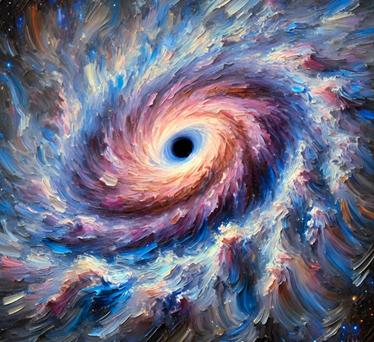Dark wind-rivers flow –
carrying starlit
essence
to regions dense
with breaking tides.
Gravitational murmurs
unravelling star-threads
of the in-betweens,
bound tight
within
galactic hearts.
Sable echoes stir,
their muted power
etched deep
in void
and light.
This poem is inspired by recent research, which has found that dense, swirling winds help supermassive black holes grow.
Understanding how galaxies grow and change, especially in their central regions around supermassive black holes, is a key question in astronomy. One way galaxies might manage this growth is by pushing gas out from their cores through strong winds. However, scientists aren’t sure what exactly causes these winds. They might be driven by jets, mechanical forces, radiation, or magnetic processes. In some galaxies, the centres are so dense and obscured that they hide growing supermassive black holes or intense star-forming activities. These hidden centres, called compact obscured nuclei, are found in about 30% of the brightest infrared galaxies.
In a recent study, scientists examined a galaxy known as ESO 320-G030, which is a very bright infrared galaxy with a hidden, dense centre and a large molecular wind. Using detailed observations from the ALMA telescope, they looked at specific molecules in this galaxy. They found that the wind in ESO 320-G030 is not caused by star formation or active black hole activity. Instead, it seems to be driven by magnetic processes. This finding suggests that the way galaxies grow and develop their central regions might be similar to how stars form, using gravitational forces to create these winds. This means that galaxies can partly control their own growth without needing external influences, providing new insights into how galaxies evolve.


























































